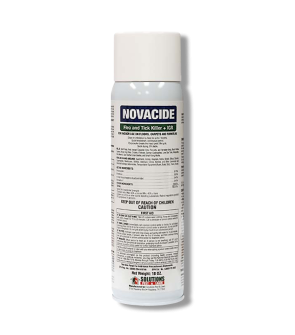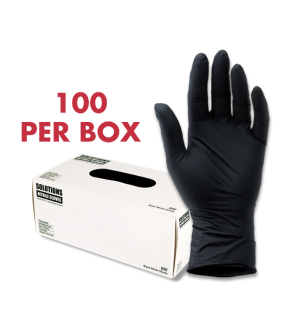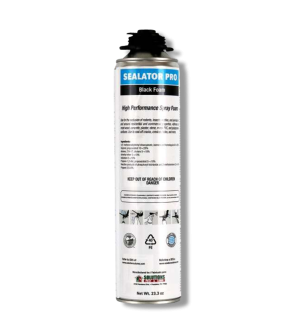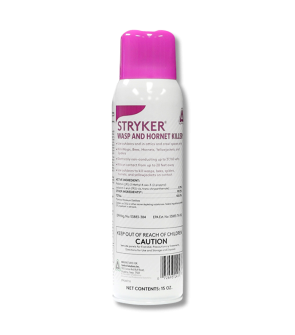Gain access to personalized product screening, the best pricing, rewards, and more!
Most Effective Products
How to Apply Aerosols
Aerosols are essential pesticide control tools in many structure applications against pests. They are designed to be ready to use without mixing upon spraying.
These pesticides work by releasing a fine mist or cloud of pesticides into the air, which kills pests by contact or when they travel across a treated area. Often, they are best used in spaces not easily reached with standard pesticides.
Refer to this DIY guide to learn how to use and apply aerosols for the average do-it-yourselfer.
Choose Your Product and Tool
While most aerosols are ready to go, you will still need the following for application: types of personal protective equipment (PPE).
Contact Kill Aerosols
- Eliminate pests immediately.
- Provides relief briefly.
Residual Aerosols
- Long-lasting pest control.
- Stops invasive pests.
Non-Repellent Aerosols
- Easily spread among colonies.
- Great for ants and other sensitive pests.
Insect Growth Regulators
- Stops pests from developing into adults.
- Great for fast producers.
Personal Protective Equipment (PPE)
- Eyewear.
- Face covering such as masks or respirators.
- Gloves.
- Long-sleeve shirt.
- Long pants.
- Closed-toed shoes with socks.
- Coveralls or Tyvek suit.
How to Use
Step 1: Prepare the Treatment Area

If the area is severely infested with more severe pests, such as bed bugs, leave the items in the treatment area to avoid spreading the infestation.
Ensure the treatment area is cleaned with water only and completely dried. Cleaning with other chemical agents may reduce the residual of certain aerosol products.
Remove any animals from the treatment area before spraying if instructed on the label.
Step 2: Attach Straws, Tubing, Etc Provided with Aerosol
Many aerosols, especially insecticides, come with a type of applicator straw or tubing.
Typically, these additional items are used in crack and crevice treatments.
Attach the straw or tubing to the nozzle as directed on the product label.
For example, Pyrid Insecticide Aerosol will need the white actuator removed and replaced with the red straw applicator to make crack and crevice treatments.
Otherwise, you can leave the white actuator in place if you directly spray insects or space spray applications.
Some aerosols have a built-in crack and crevice applicator that simply needs to be folded up to make applications.
To control certain stinging pests, such as wasps and hornets, we suggest using the Stryker Wasp and Hornet Killer. In this instance, you can leave the actuator in place, point it, and spray.
We recommend using FiPro Foaming Aerosol for pests that like to hide in wooded crevices, like carpenter bees. Remove the cap and insert the injector straw into the nozzle tip.
Other products like Novacide Flea & Tick Killer may need to be turned at a certain angle to spray. Leave the actuator in place and point it upside down to spray. For space sprays, you leave it right-side up, but be aware that it will spray straight up.
Step 3: Spray Aerosol

An example of a contact spray can be seen with Pryid Insecticide Aerosol. Simply apply the product in short bursts towards the labeled pests you see in your line of sight from a distance of 18-24".
Do not exceed 10 seconds of Pyrid Insecticide Aerosol per room for residential areas or 10 seconds of product per 100 ft. of commercial areas.
Where to Use
Depending on the label, aerosols may be used in the following, but not limited sites:
- Residential, commercial, or institutional rooms
- Structural cracks and crevices
- Around plumbing
- Over floors
- Furniture surfaces
- Cracks, crevices, and voids of furniture
- Window and door frames
- Fences
What To Do After Application
Ventilate the Treated Area
Give enough time for the secluded area to be ventilated before reentering it. The same rule applies to other people and animals in the treated area.
You may need to open the doors and windows to the treated room so the air can move out and disperse the odor.
Stay Out
Follow the REI (restricted entry interval) of the aerosol label.
This will tell you how long it takes to keep people and pets out of the treated area before it is safe to reenter. It will also instruct if it is safe for objects to return to the area after spraying.
Dispose of Deceased Pests and Trash
Check the treated area for any trash disposed of by pests or weather activities. Be sure to watch out for deceased pests as well.
Properly clean up the materials and pests if they appear.
Repair Openings
Address any cracks, crevices, and other voids after the complete residual rate or spraying.
We recommend filling voids with caulk or a foam like the Solutions Sealator Pro Black Foam.
The Solutions Sealator Pro Black Foam creates airtight seals that rodents, insects, and animals cannot easily travel through. This product must be applied with the Solutions Polyurethane Foam Gun.
Hold the gun upside down and quickly screw the canister onto the foam gun’s adapter.
Speed is critical to avoiding any leakage. If leaking occurs, immediately clean the gun’s exterior with the cleaner.
Once the foam canister is connected, hold the gun upright and shake it roughly 20 times.
Loosen the gun’s control knob and begin to apply foam by squeezing the trigger.
You can adjust the amount of foam applied by adjusting the control knob further and the amount of pressure you use to squeeze the trigger.
Once you’ve completed your application, apply the cleaner to the gun’s tip and wipe it dry. Allow the foam time to expand and cure.
For larger voids, we recommend filling them with the Stuf-Fit Copper Mesh.
Store the Aerosol
Once your application is complete, properly store the aerosol according to the product label instructions.
Generally, most aerosols must be stored in dry, cool areas away from direct sunlight, open flames, and excessive heat.
These areas should not be accessible to children and pets.
What to Expect
Increased Pest Activity
Certain pests, such as cockroaches, may suddenly seem overwhelming as aerosols are sprayed.
This is because certain applicators, such as crack and crevice treatments, cause the pest to rush out of their harborage space to escape the pesticide.
Common pests controlled with pesticide aerosols are bed bugs, ants, mosquitoes, spiders, flies, pantry pests, moths, wasps, termites, wood-infesting pests, invasive insects, stink bugs, fleas, ticks, and cockroaches.
Patience
Depending on the pesticide aerosol, some patience may required on your end.
Most insecticide aerosols will take care of the pest infestation after a few hours. However, completely controlling a pest infestation may take a couple of days or weeks.
This is because certain pests, like bed bugs, like to hide in areas as thin as a credit card and will need to contact the spray directly or travel across treated areas to be killed.
Depending on the pesticide aerosols active ingredients, how it's applied, and the type of control area it is being used to will determine how long it lasts. This can be lessened if cleaning or moisture washes away previously sprayed sites.
Key Takeaways
What is An Aerosol Insecticide?
- An aerosol insecticide is a ready-to-spray liquid bug spray containing active ingredients labeled to kill certain pests.
What Are Some Examples of Spray Aerosols
- The main types of aerosols are contact, residual, and insect growth regulators.
Are Aerosols Safe
- Aerosols are safe to use when applied according to the product label instructions, but they can be harmful if misapplied or in large quantities.

















